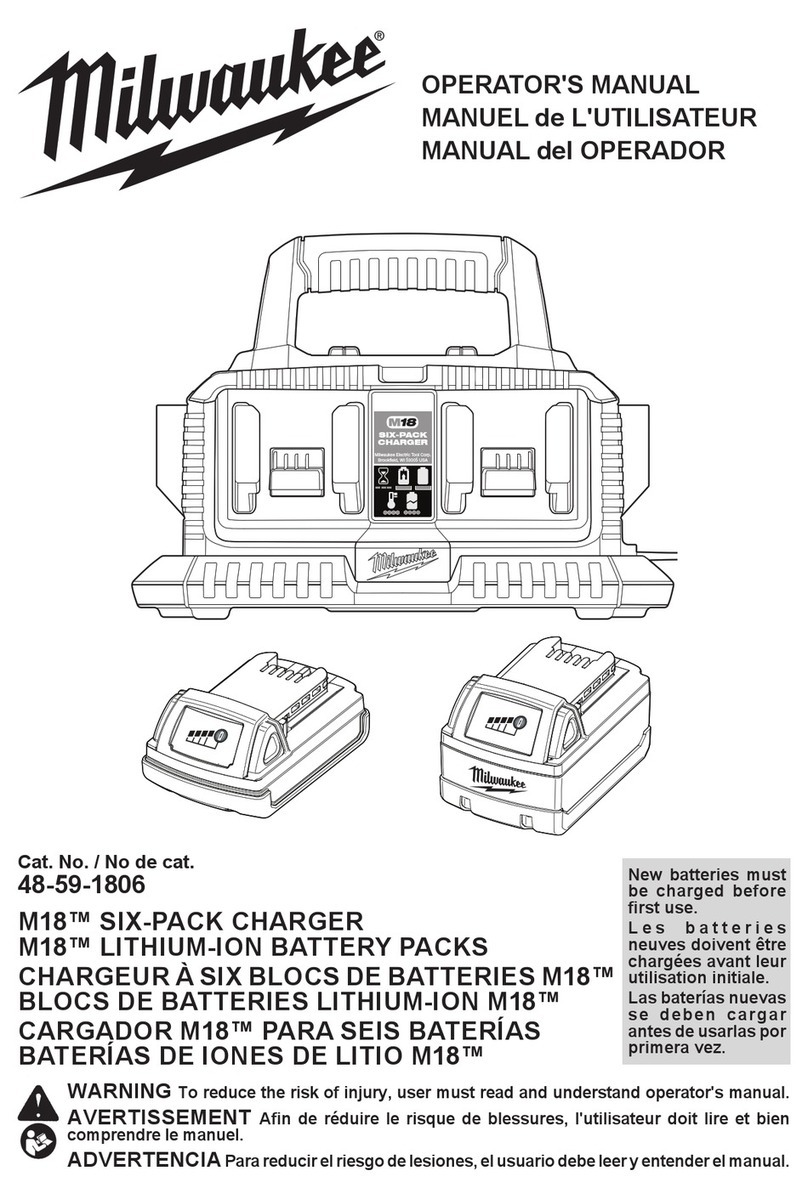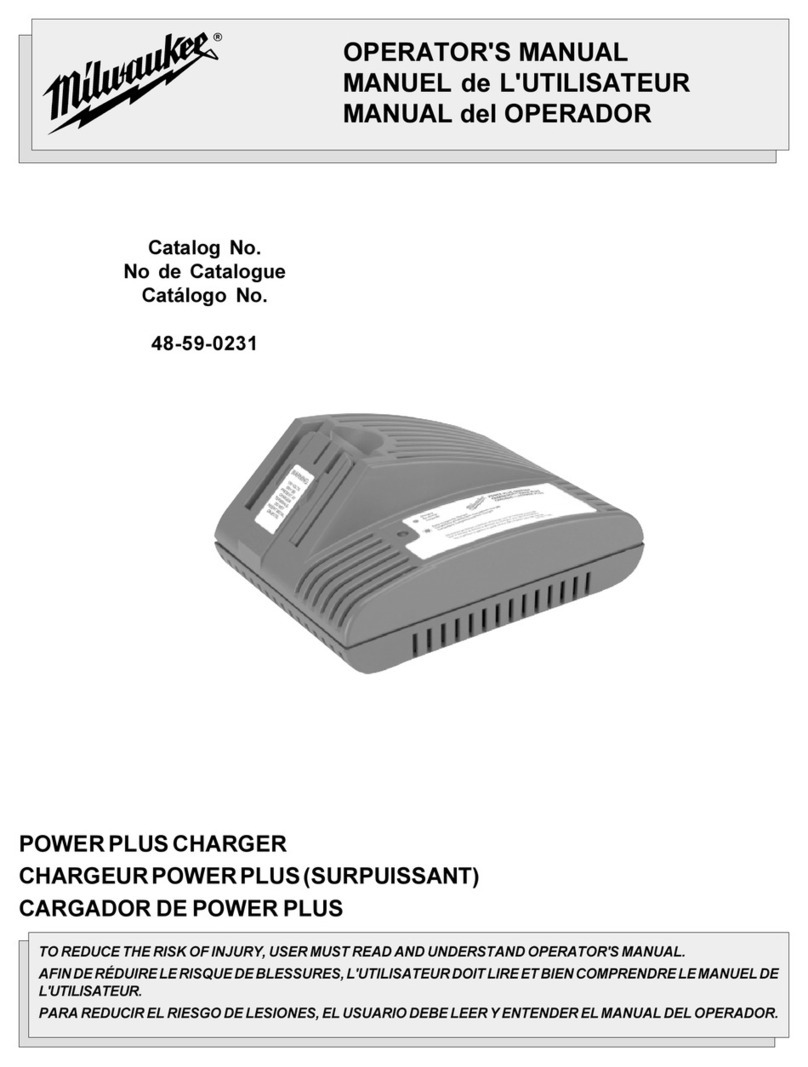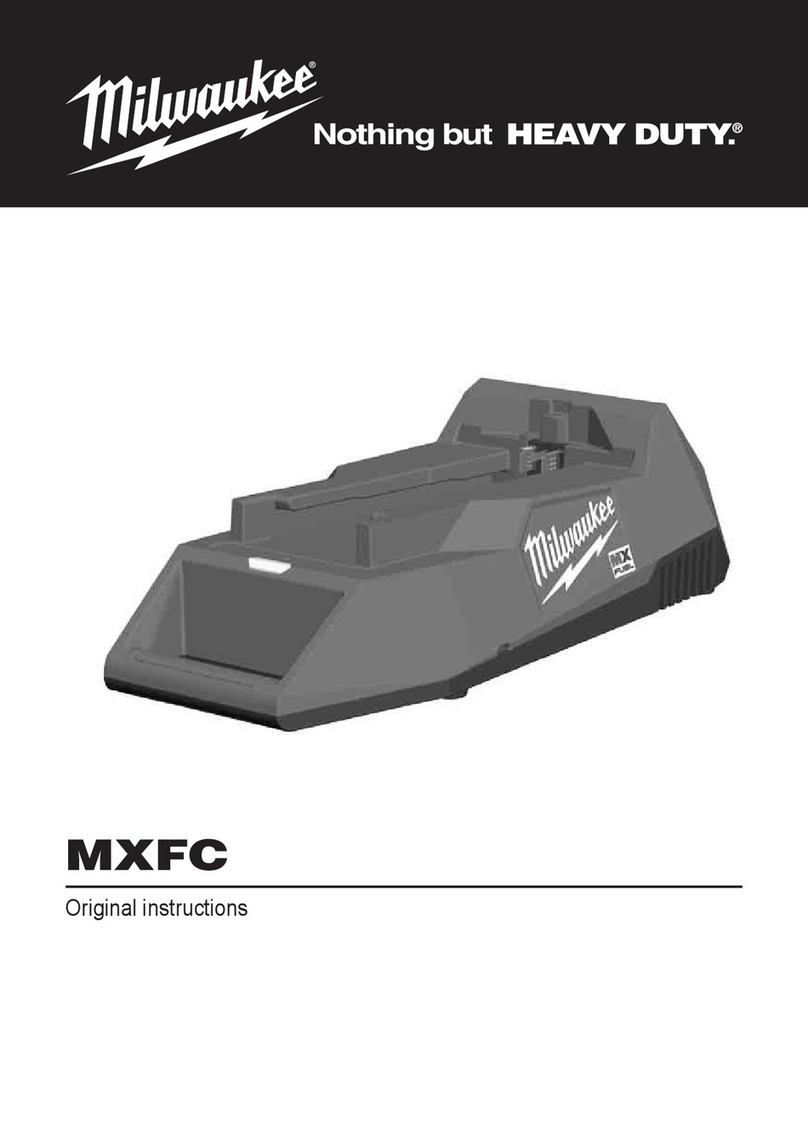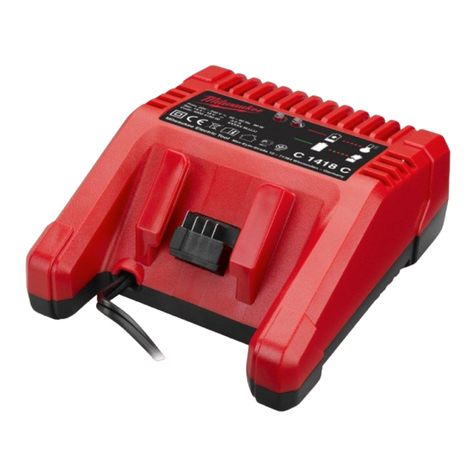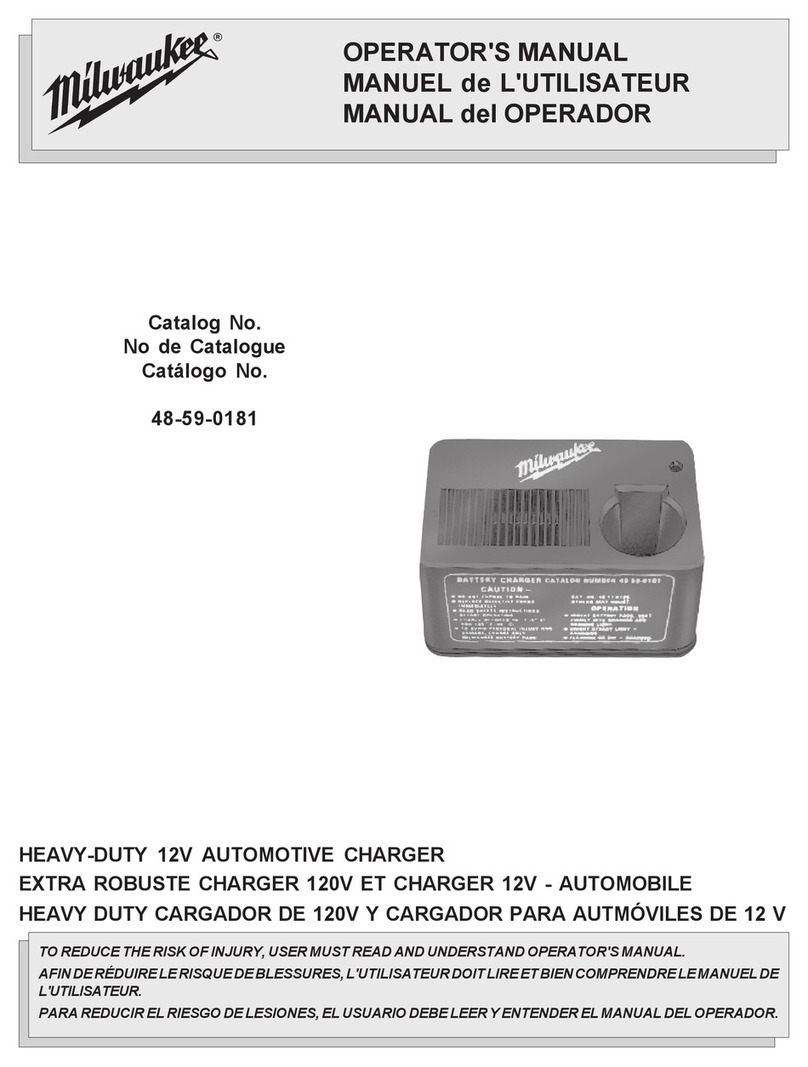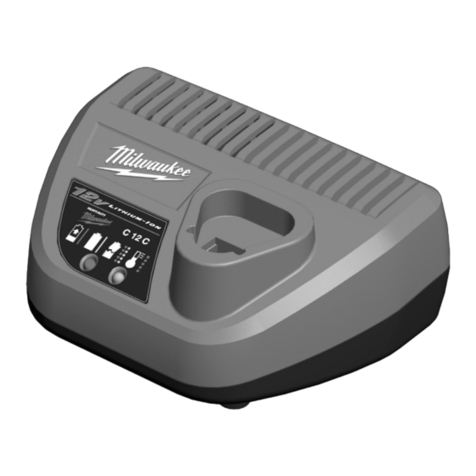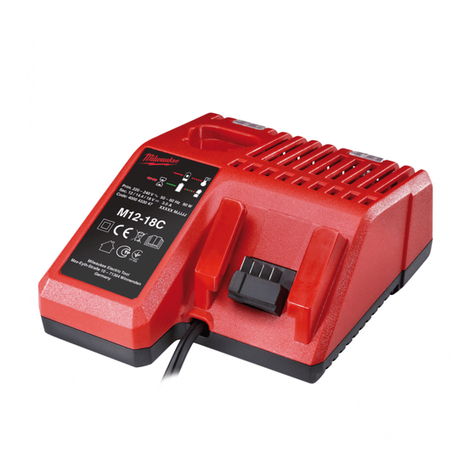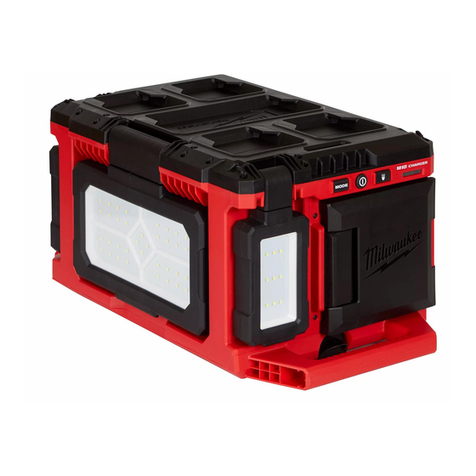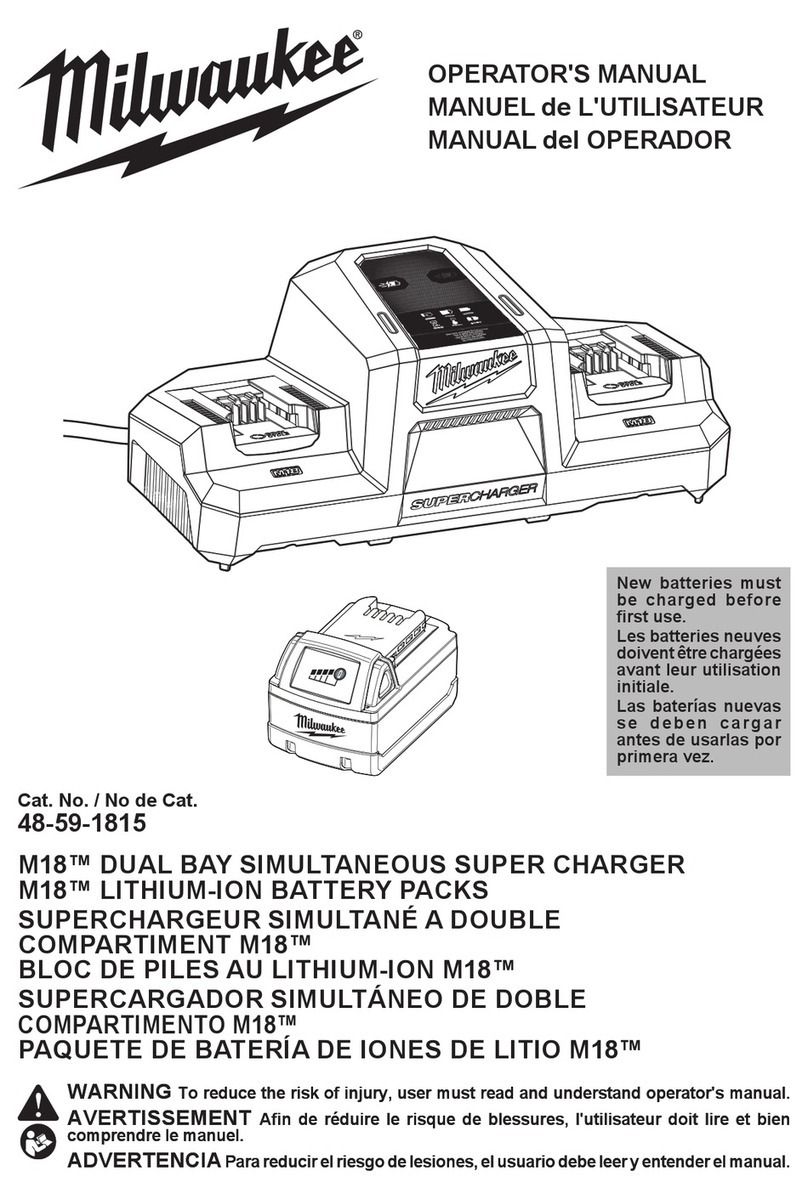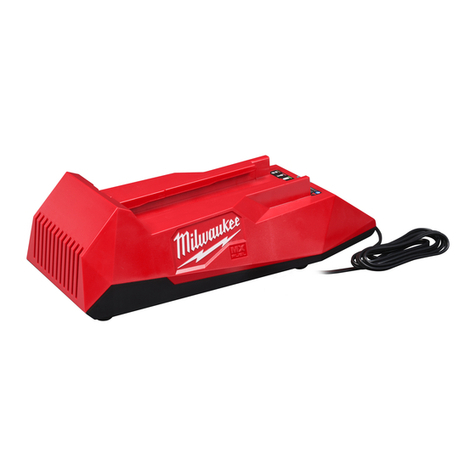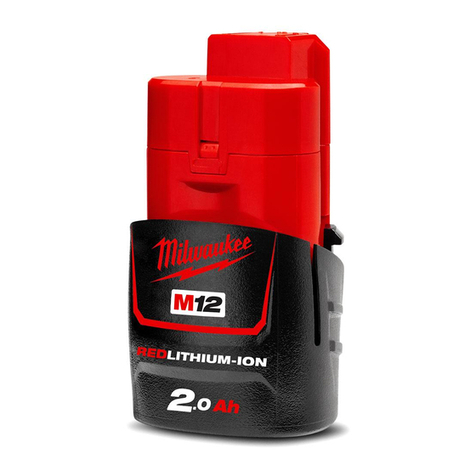
9
ENGLISH
BATTERIES
Battery packs that have not been used for some time should be
recharged before use.
Temperatures in excess of 50 °C reduce the performance of the
battery pack. Avoid extended exposure to heat or sunshine (risk of
overheating).
The contacts of the chargers and battery packs must be kept clean.
For an optimum lifetime, the battery packs have to be fully charged
after use.
To obtain the longest possible battery life, remove the battery pack
from the charger once it is fully charged.
For battery pack storage longer than 30 days:
• Store the battery pack where the temperature is below 27 °C and
away from moisture.
• Store the battery packs in a 30% – 50% charged condition.
• Every six months of storage, charge the pack as normal.
BATTERY PACK PROTECTION
To protect itself from damage and extend its life, the battery
pack’s intelligent circuit monitors current draw and temperature. In
extremely high torque, binding, stalling, and short circuit situations,
the battery pack turns offthe product if the current draw becomes
too high. The fuel gauge flashes. Release the trigger, wait for the
fuel gauge to stop flashing, and then restart the product.
Under extreme circumstances, the internal temperature of the
battery could become too high. If this happens, the fuel gauge lights
flash in an alternating pattern and the product does not run. Allow
the battery pack to cool down.
TRANSPORTING LITHIUM BATTERIES
Lithium-ion batteries are subject to the Dangerous Goods
Legislation requirements.
Transportation of those batteries has to be done in accordance with
local, national, and international provisions and regulations.
Batteries can be transported by road without further requirements.
Commercial transport of lithium-ion batteries by third parties is
subject to Dangerous Goods Regulations. Transport preparation and
transport are exclusively to be carried out by appropriately trained
persons and the process has to be accompanied by corresponding
experts.
When transporting batteries:
• Ensure that the battery contact terminals are protected and
insulated to prevent short circuit.
• Ensure that the battery pack is secured against movement within
the packaging.
• Do not transport batteries that are cracked or leaking.
• Check with the forwarding company for further advice.
CHARACTERISTICS
Immediately after using the battery pack, the fuel gauge may display
a lower charge than it will if checked a few minutes later. The battery
cells recover some of their charge after resting.
Remove the battery pack from the product for charging when
convenient for you and your job. MILWAUKEE batteries do not
develop a memory when charged after only a partial discharge. It is
not necessary to run down the battery pack before placing it on the
charger.
The only time it is necessary to charge the MILWAUKEE Li-ion
battery pack is when the battery pack has reached the end of its
charge. To signal the end of charge, the power to the product will
drop quickly, allowing just enough power to finish making a cut,
drilling a hole, or driving a fastener. Charge the battery pack as
needed.
The charger will keep the battery pack fully charged if it is left on the
charger. The light indicator will be the same as normal charging.
If the light indicator flashes red and green, check that the battery
pack is fully seated into the bay. Remove the battery pack and
reinsert it. If the light continues to flash red and green, remove the
battery pack(s) and unplug the charger for at least 2 minutes. After 2
minutes, plug the charger back in and insert the battery pack. If the
problem persists, contact a MILWAUKEE service centre.
CHARGER LIGHT INDICATORS
Continuous red Charging
Slow flashing green Approaching full charge
Continuous green Charging is complete
Fast flashing red
Battery or charger is too hot/
cold - charging will begin/resume
when battery pack or charger
reaches the correct charging
temperature.
Slow flashing red Battery charge is pending -
Charging will begin when the first
pack is fully charged.
Flashing red/green Damaged or faulty battery pack
SUPER CHARGING
Super charge occurs when the battery pack is
charging above 9 A. The super charge light indicator
illuminates when a battery pack is super charging. If
charging two battery packs capable of 12-ampere charging, the
charger recharges the first pack at 12 A, and the second battery
pack recharges at 6 A. Once the first battery pack is fully charged
(charge indicator light is solid green), the second battery pack
charges at 12 A or up to 18 A (depending on the battery pack
capacity) until it is fully charged.
COLD WEATHER OPERATION
MILWAUKEE Li-ion battery packs are designed to operate in
temperatures below freezing. When the battery pack is too cold, it
may need to warm up before normal use. Put the battery pack on a
product and use the product in a light application.
COOL CYCLE FANS
Cool cycle fans are designed to cool the battery packs while
charging.
Once the battery pack is inserted, the cool cycle fans turn on and
may continue cooling the battery pack after it is charged.
The cool cycle fans may not turn on or spin slower if the battery
pack is cool.
If the charge light indicators slowly pulse red with no battery pack
installed, the cool cycle fan is damaged, contact a MILWAUKEE
service facility.

